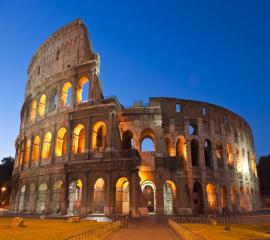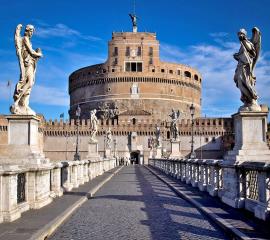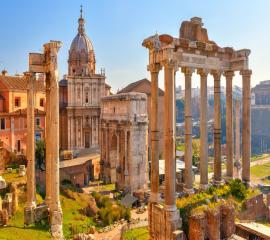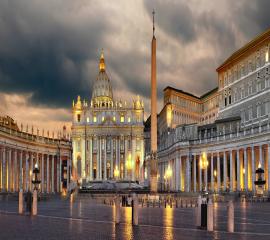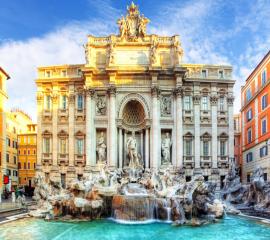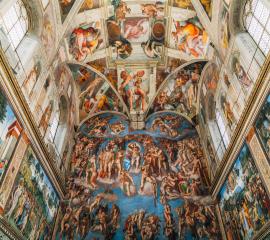City Attractions
Comments
Colosseum
As the Eiffel Tower is to Paris, the silhouette of the Flavian Amphitheatre is to Rome. The largest structure left to us by Roman antiquity, the Colosseum still provides the model for sports arenas - present day football stadium design is clearly based on this oval Roman plan. The building was begun by Vespasian in AD 72, and after his son Titus enlarged it by adding the fourth story, it was inaugurated in the year AD 80 with a series of splendid games.
Castel Sant'Angelo
The Mausoleum of Hadrian, usually known as Castel Sant'Angelo, is a towering cylindrical building in Parco Adriano, Rome, Italy. It was initially commissioned by the Roman Emperor Hadrian as a mausoleum for himself and his family. The building was later used by the popes as a fortress and castle, and is now a museum
Roman Forum
An impressive – if rather confusing – sprawl of ruins, the Roman Forum was ancient Rome's showpiece centre, a grandiose district of temples, basilicas and vibrant public spaces. The site, originally a marshy burial ground, was first developed in the 7th century BC, growing over time to become the social, political and commercial hub of the Roman empire. Signature sights include the Arco di Settimio Severo, the Curia, the Tempio di Saturno and the Arco di Tito.
St. Peter's Basilica
In this city of outstanding churches, none can hold a candle to St Peter's, Italy’s largest, richest and most spectacular basilica. Built atop a 4th-century church, it was consecrated in 1626 after 120 years' construction. Its lavish interior contains many spectacular works of art, including three of Italy's most celebrated masterpieces: Michelangelo’s Pietà, his soaring dome, and Bernini’s 29m-high baldachin over the papal altar.
Trevi Fountain
The Fontana di Trevi, scene of movie star Anita Ekberg's late-night dip in La Dolce Vita, is a flamboyant baroque ensemble of mythical figures and wild horses taking up the entire side of the 17th-century Palazzo Poli. After a Fendi-sponsored restoration finished in 2015, the fountain gleams brighter than it has for years.
Piazza Navona
With its showy fountains, baroque palazzi and colourful cast of street artists, hawkers and tourists, Piazza Navona is central Rome’s elegant showcase square. Built over the 1st-century Stadio di Domiziano, it was paved over in the 15th century and for almost 300 years hosted the city's main market.
Pantheon
A striking 2000-year-old temple, now a church, the Pantheon is the best preserved of Rome’s ancient monuments and one of the most influential buildings in the Western world. Built by Hadrian over Marcus Agrippa’s earlier 27 BC temple, it has stood since around AD 125, and while its greying, pockmarked exterior might look its age, it's still a unique and exhilarating experience to pass through its vast bronze doors and gaze up at the largest unreinforced concrete dome ever built.
Museo e Galleria Borghese
If you only have time for one art gallery in Rome, make it this one. Housing what's often referred to as the ‘queen of all private art collections’, it boasts paintings by Caravaggio, Raphael and Titian, plus sensational sculptures by Bernini. Highlights abound, but look for Bernini's Ratto di Proserpina and Canova's Venere vincitrice.
Vatican City
The State of Vatican City, in the center of Rome, is the smallest state in Europe, both in population and expanse. Vatican City is an independent city state located in the heart of Rome, ruled by the Pope (Bishop of Rome). It is the center of authority over the Roman Catholic Church. The Vatican is the smallest state in Europe. It has a total area of 0,44 km² and inside its wall live approximately 1000 people.
Sistine Chapel
Regarded as Michelangelo’s masterpiece, the Sistine Chapel is a jaw-dropping attraction worth at least seeing once in your lifetime. The Sistine Chapel is one of the greatest treasures of the Vatican City, of Rome and of the world in general. It is known as much for its decoration, as for being the temple in which popes are chosen and crowned.

